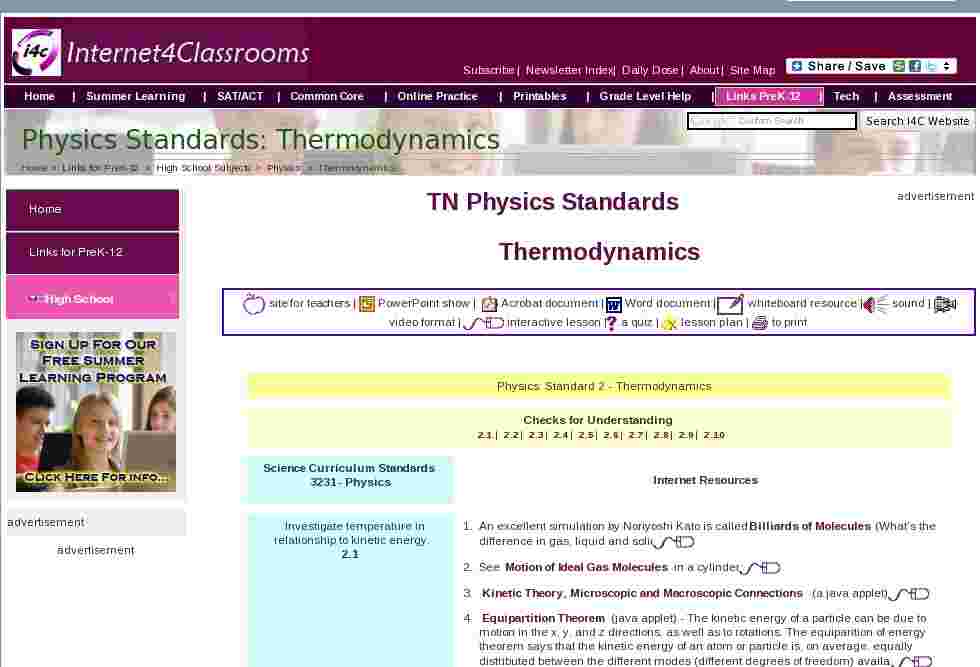advertisement
TN Physics Standards
Thermodynamics
site for teachers |
PowerPoint show |
Acrobat document |
Word document |
whiteboard resource |
sound |
video format |
interactive lesson |
a quiz |
lesson plan |
to print
Science Curriculum Standards
3231 - Physics
- An excellent simulation by Noriyoshi Kato is called Billiards of Molecules (What's the difference in gas, liquid and solid)

- See Motion of Ideal Gas Molecules in a cylinder
- Kinetic Theory, Microscopic and Macroscopic Connections (a java applet)
- Equipartition Theorem (java applet) - The kinetic energy of a particle can be due to motion in the x, y, and z directions, as well as to rotations. The equiparition of energy theorem says that the kinetic energy of an atom or particle is, on average, equally distributed between the different modes (different degrees of freedom) available.
- Special Processes of an Ideal Gas - an applet to investigate ideal gases
- Thermodynamic Equilibrium - an applet designed to simulate the diffusion process which occurs when gases of different temperatures are mixed (seven experiments can be performed with this applet)
- What is Heat?
- Methods of Heat Transfer
- Rates of Heat Transfer
- Physics Lab: Linear Thermal Expansion - The purpose of this lab experiment is to measure the linear expansion coefficients of up to three different metals
- Thermal Expansion - explanation and illustration

Search Internet4Classrooms
 Custom Search
Custom Search
- Site Map |
- About Us |
- Teacher Training |
- Make Internet4Classrooms.com your home page. |
- Copyright © 2000-2024 Internet4Classrooms, LLC All rights reserved.
Use of this Web site constitutes acceptance of our Terms of Service and Privacy Policy.
1764988071640487 US 1 desktop not tablet not iPad device-width